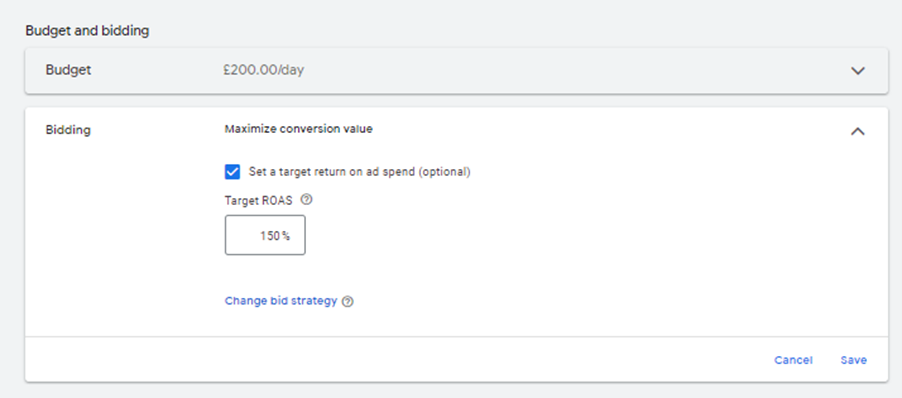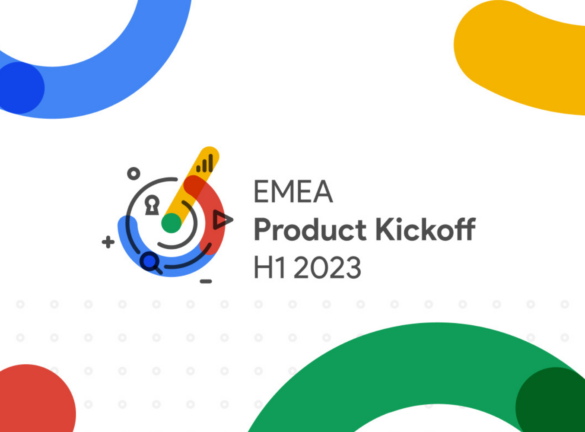
Is Google’s Performance Max Right For You?
Performance Max, which wholly replaced Google’s Smart Shopping campaign type in September 2022, is taking the world of Google Ads by storm. The new, goal-based campaign type allows performance advertisers to reach their target audience across Google’s Ad’s inventory including Search, YouTube, Display, Discover, and Gmail all from a single campaign.
Performance Max campaigns are comprised of asset groups, these work in a similar way to your usual Google Ads ad group. So, you’re probably wondering why not just call it an ad group then, right? Well, an asset group is different as you have the option of adding a collection of creatives, relevant to your specified target audience.
Google uses the assets provided to create ads for all campaign types applicable to your marketing objective.
Now, what requirements are there for your performance max creative?
Image Specifications
- Maximum 15 images
- Recommended: 3 landscape, 4 square and 1 portrait
- Maximum 5 logos
- Recommended: 2 logos (in square & landscape)
Text Specifications
- 5 Headlines (30 characters maximum)
- 1 Headline (15 characters maximum)
- 5 Long Headlines (90 characters maximum)
- 4 Descriptions (90 characters maximum)
- 1 Description (30 characters minimum or less)
- Add a Business name
- 1 Call-to-action
Video Specifications
- 5 Videos (10 seconds minimum)
Please note that if you do not upload a video one may be automatically generated for you.
Performance Max has rebranded the Product Groups shopping feature to Listing Groups, which you can use to organise your SKU’s by attributes such as category, brand or item ID. This is where you can dig a little deeper into key metric performance for specific products or attributes. From a retail perspective, this is useful for identifying your best and worst-performing products.
Google claims that advertisers making the most of Performance Max are seeing an average increase of 13% total incremental conversions at a similar cost per action. Our team at ROAST decided to put this claim to a test and launched a Performance Max campaign for one of our retail clients. To comparatively measure results, we used an identical structure to our smart shopping campaigns. We uploaded all recommended assets, along with customer match lists so the audience segments could make the most of their first-party data. Our client’s investment increased from £3k to £11k and revenue increased 900%, from £7k to £63k. As a result, ROAS almost doubled to £5.30! Performance Max had clearly improved efficiencies while expanding the account.

Another advantage of Performance Max campaigns is their simplicity in set up and management. Once you provide Google with relevant assets, a ROAS target and a daily budget, machine learning will use this to optimise towards your desired ROAS to help drive conversions in real-time. Providing a wide array of creative allows the system to create even more relevant ads which has the potential to improve performance. Additionally, linking your first-party data to your Google Ads account, allows you to better reach audiences with similar characteristics and behaviours to current high-value customers, which unlocks new audiences to drive growth further.

However, this simplicity in setup also comes with its downsides, as it provides less control to the advertiser. If you’re familiar with Google Ads, you will understand the importance and value of negative keywords. Whilst it is possible to add negative keywords to a Performance Max campaign, the process is lengthy – gone are the days of a quick SQR check and excluding these at the click of a button! You must now upload your negative keywords to the shared library, get in touch with a Google representative and ask them to upload your negative keywords to your campaign.
Performance Max operates as a “black box”, with data and results becoming less transparent. As a result, we don’t have access to all actionable data, and are unable to leverage these insights for future strategies. For example, there is no channel-specific reporting capability, so we’re unable to track spend between different campaign types.
However, we have begun seeing campaign enhancements, with both optimisation score and seasonality adjustments released earlier this year. We’ve found the rising search trends function available within the insights tab particularly useful, as this enables the advertiser to identify growth opportunities and respond to changes in consumer behaviour.
Another consideration is that if you do not provide any video assets, Google will auto-generate a video for you. Google may overlay music that does not align with the brand or target audience, so this is one to be mindful of and if possible, always provide your own video to mitigate this.
In summary, we have seen positive results using Performance Max so far. It is easy to set up, simple to manage, and can be a good tool for getting maximum exposure across Google’s inventory. However, the lack of data transparency can be problematic for making meaningful optimisations based on individual client priorities and objectives. In recent years, it does seem like Google has been focusing on automation and machine learning, which poses the question as to whether these gaps in reporting will ever be rectified.
Would you like to find out more about Google’s Performance Max? Reach out to our Paid Media team here to discuss how we can assist.






